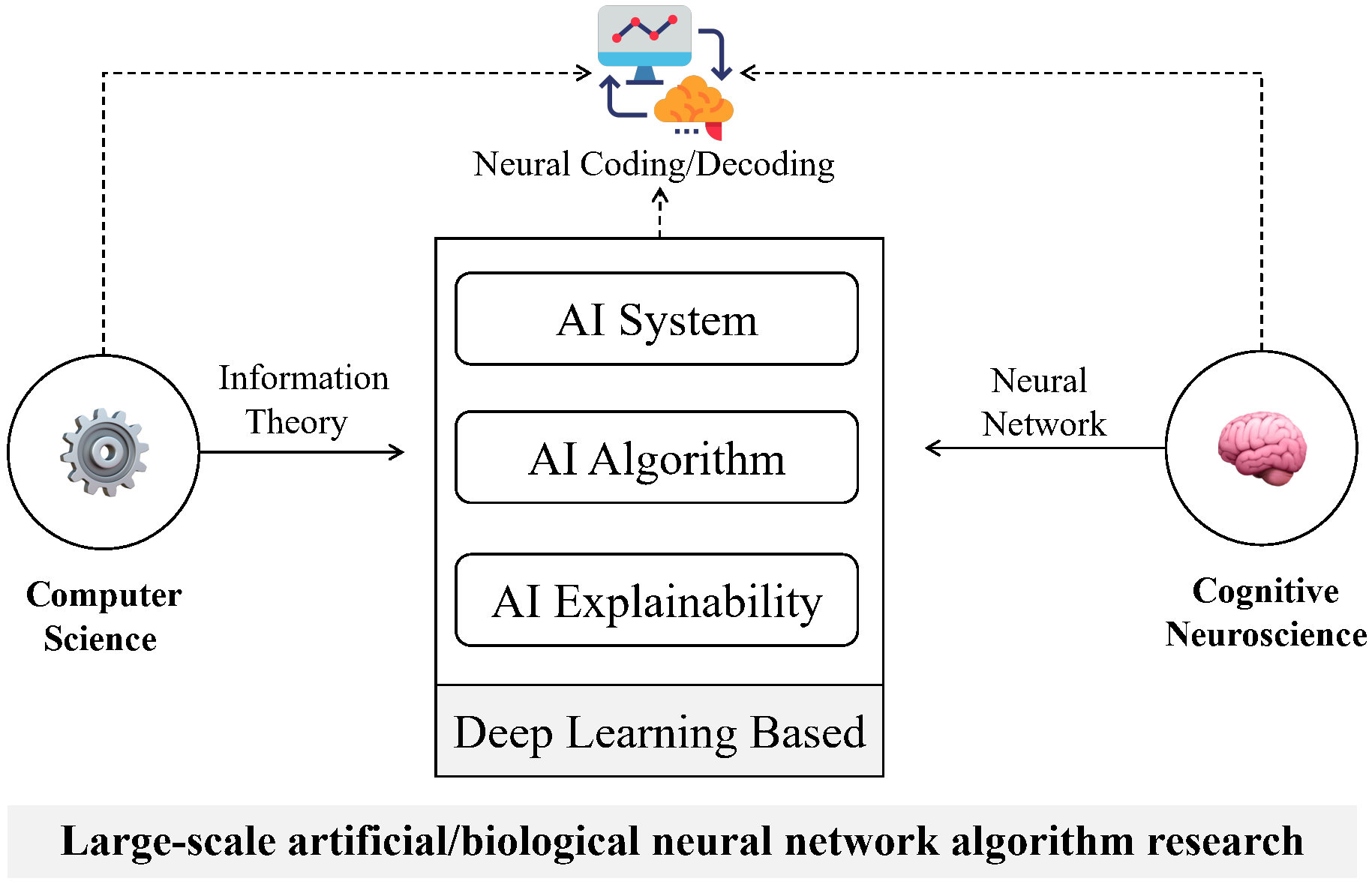About me
Explores fundamental mechanisms of intelligence through neuroscience, computer science, mathematics, and physics, with triple objectives: (1) designing scalable, efficient, and trustworthy AI models, and (2) pursuing next-generation AI paradigms. (3) building brain foundation models to improve brain-computer intelligence.
🪧OnMarket Seeking a Postdoc Position for Fall 2026
- Systems → How to engineer better AI (efficiency, scalability, robustness)
- Algorithms → How to design smarter AI (learning, adaptation, generalization)
- Mechanisms → How to understand deeper AI (principles, explainability, theory)

My training mirrors this stack—B.E. Computer Science , M.E. Deep Learning, and Ph.D. Cognitive Neuroscience—enabling me to tackle challenges across all three layers with deep expertise. Strong coding ability enables me to implement complex systems, models, and Agents. Looking forward to contributing to your team.
🧠Ph.D., 2022~Now, majored in Cognitive Neuroscience. State Key Laboratory of Cognitive Neuroscience and Learning (IDG/McGovern Institute for Brain Research) at Beijing Normal University. Advised by Prof. Jing Sui & Prof. Vince D. Calhoun (TReNDS). Research on AI↔Brain.
👨⚕️M.E., 2019~2022, majored in Software Engineering. Advised by Prof. Zhongyu li. Research on Deep Learning. 🤖B.E., 2014~2018, majored in Software Engineering. Research on Embedded Software & Robot.
| Interests | Education |
| ⚡️Efficient AI 🎯Generative AI 📈Continual Learning 🌍Multimodal Learning | 🎓Ph.D. in Beijing Normal University, 2022-Present State Key Laboratory of Cognitive Neuroscience and Learning 🎓M.E. in Xi’an JiaoTong University, 2019-2022 Faculty of Electronic and Information Engineering |
News
- ⌛️ 2025/11 A patent is in the application process.
- 🎉 2025/10 A paper has been Accepted by Optics and Lasers in Engineering (JCR Q1).
- ⌛️ 2025/07 A patent is in the application process.
- 🎉 2025/07 A paper has been Accepted by Neurocomputing (JCR Q1, IF=6.5).
- 🎉 2025/07 A paper has been Accepted by Physics in Medicine and Biology (JCR Q1).
- 🎉 2025/01 A patent (No. 202410125896.X) for the application of artificial intelligence in radiotherapy.
- 🎉 2024/08 A paper has been Accepted by Medical physics 2024 (JCR Q1, Top 3 Medical Physics journals)
- 🎉 2024/04 A paper about eliminating site effects will be Accepted to EMBC 2024.
- 🎉 2023/12 An abstract of neuroimage classification was Accepted to OHBM2024.
- 🎉 2023/10 Join in the National key research and development program.
Selected Publications
# Equal contributions
- For a complete list (including works under review), please contact me via email.
- Model Design
- Xiangxiang Cui#, Min Zhao#, et al. “A Cross-Feature Mutual Learning Framework Integrating Multiple Features for Brain Disorder Diagnosis”. In Neurocomputing 2025 (JCR Q1)
- Xiangxiang Cui#, Xueying Yang#, et al. “A StarGAN and Transformer-Based Hybrid Classification-Regression Model for Multi-institution VMAT Patient-Specific Quality Assurance.” In Medical Physics 2024 (JCR Q1).
- Xiangxiang Cui, Dongmei Zhi, Weizheng Yan, et al. “CGDM-GAN: An Adversarial Network Approach with Self-supervised Learning for Site Effect Removal. “ In EMBC 2024, CAAI B.
- Xiangxiang Cui, et al. “Multi-Scale Analysis Framework Integrating Brain Functional Connectivity and Activity” In the Annual Meeting of the organization for Human Brain Mapping (OHBM) 2024.
- Xiangxiang Cui, et al. “CGDM-GAN: An Adversarial Network Approach with Self-Supervised for Removing Site Effects” In the Annual Meeting of the organization for Human Brain Mapping (OHBM) 2023.
- Xiangxiang Cui, et al. “Variable-frame CNNLSTM for Breast Nodule Classification using Ultrasound Videos” Preprint 2023.
- Xiangxiang Cui, et al. “DEAttack: A differential evolution based attack method for the robustness evaluation of medical image segmentation.” In Neurocomputing 2021, JCR Q1, IF:6.5.
- Xueying Yang#, Xiangxiang Cui#, et al. “Uncertainty quantification-guided patient-specific quality assurance using Bayesian neural networks based on field complexity features and fluence maps”. In Physics in Medicine and Biology 2025 (JCR Q1)
- Yi Cui, Xiangxiang Cui, et al. “Information transmission through light-induced scattering in photorefractive crystal”. In Optics and Lasers in Engineering 2025 (JCR Q1).
- Yichen Wang, Zhongyu Li, Xiangxiang Cui, et al. “Key-frame Guided Network for Thyroid Nodule Recognition using Ultrasound Videos” In MICCAI 2022.
- Model Explainability
- Multimodal
- Cognitive Coding
Under submission
- Xiangxiang Cui, Min Zhao, et al. “BRIEF: BRain-Inspired network connection search with Extensive temporal feature Fusion enhances disease classification” Arxiv: https://arxiv.org/abs/2508.11732
Patents
- 一种容积调强放射治疗的检测方法及相关设备, CN Patent
- 一种基于贝叶斯模型不确定性量化的 VMAT 计划患者剂量验证预测方法及系统, CN Patent
- 一种多模态脑影像精神疾病分类方法,申请中
Services
Conference Reviewers: ICLR